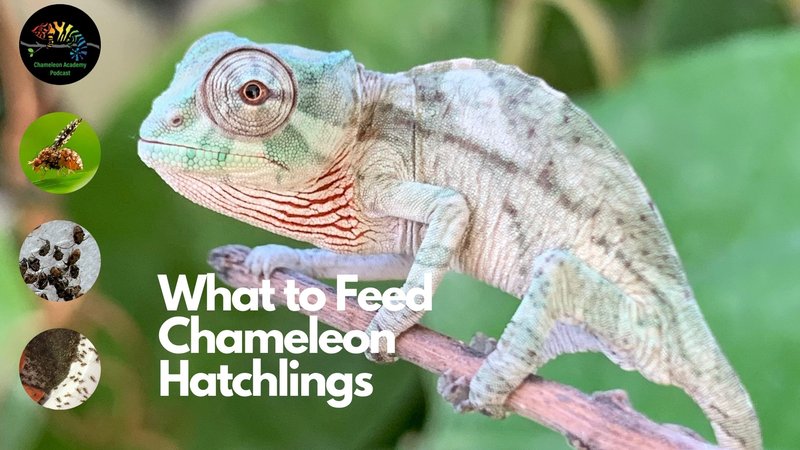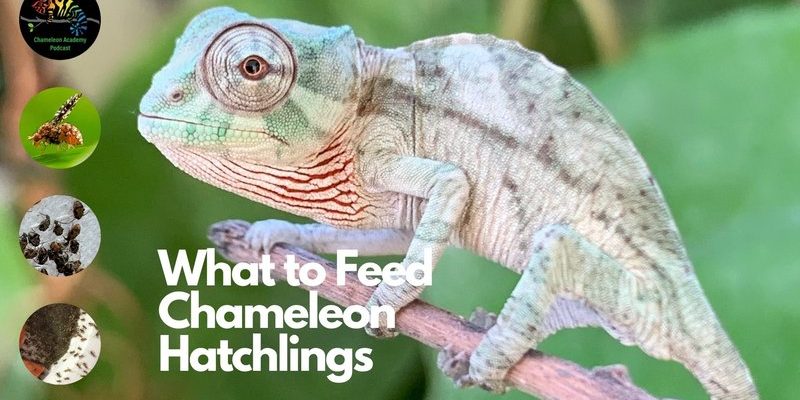
So, what does a veiled chameleon eat? Well, it’s not just a simple mix of vegetables and some water. In fact, their diet is quite specific and requires a careful balance of various foods. In this guide, we’ll dive deep into their dietary needs, feeding schedules, and tips to ensure your chameleon thrives. Let’s get started!
Understanding the Veiled Chameleon’s Diet
When it comes to a veiled chameleon’s diet, think of it as more than just a meal plan. It’s more like a menu crafted specifically for a high-maintenance gourmet. Veiled chameleons are primarily insectivores, meaning their diet mainly consists of insects. Here’s a quick rundown of the types of food they can eat:
- Cricetidae: Crickets are a staple food. They’re easy to find at pet stores and packed with protein.
- Mealworms: These can be a great occasional treat but should be limited due to their fat content.
- Roaches: Dubia roaches are an excellent choice; they’re nutritious and not overly fatty.
- Butterflies and Moths: These are good for variety, but make sure they’re pesticide-free.
You might be wondering why the emphasis on insects? Well, in the wild, veiled chameleons feast on a wide array of crawling critters. By mimicking this aspect of their natural diet, you’ll be providing them with the nutrients they need.
Base Foods: The Importance of Variety
Even though insects make up the bulk of a veiled chameleon’s diet, variety is key. Just like we wouldn’t want to eat the same meal every day, your chameleon craves different flavors and textures, too. Feeding them a mix of different insects prevents nutritional deficiencies and boredom.
Let’s break down the components of their diet further:
1. Protein Sources: Crickets and roaches can provide the protein necessary for growth and energy.
2. Vegetables and Fruits: While they’re not primarily herbivores, adding finely chopped leafy greens (like collard greens or kale) and occasional fruits (like papaya) can offer vitamins and hydration.
3. Calcium and Supplements: Dusting live insects with calcium powder or supplements ensures they get enough essential nutrients.
A diverse diet not only keeps your chameleon healthy but also stimulates their natural hunting instincts.
Feeding Frequency: How Often Should You Feed Your Chameleon?
Now that you know what they eat, let’s chat about how often to feed your veiled chameleon. Young chameleons need more frequent meals than adults. Here’s a simple guideline:
– Juveniles (up to 6 months old): Feed them daily, offering 8-10 insects per feeding.
– Adults (over 6 months): Aim for every other day, providing about 6-8 insects.
Feeding schedules can sometimes feel overwhelming, but here’s the thing: consistency is critical. Having a routine helps you monitor their eating habits and catch any potential health issues early.
Hydration: Don’t Forget About Water!
While thinking about diet, hydration is just as crucial for your veiled chameleon. In the wild, they get most of their water from their food, but in captivity, we need to lend a hand. Here are some tips on keeping your chameleon hydrated:
– Misting: Regularly mist the enclosure to create a humid environment. This not only helps with hydration but encourages drinking from leaves and branches.
– Water Dishes: Some chameleons will drink from shallow dishes. Be sure to change the water daily to keep it clean.
– Ice Cubes: You can toss ice cubes into their habitat; they’ll slowly melt, providing moisture as the chameleon licks the droplets.
By ensuring your veiled chameleon stays hydrated, you’re supporting their overall health.
Common Nutrition Mistakes to Avoid
Even seasoned chameleon owners can make dietary mistakes, so it’s good to be aware. Let’s look at some common pitfalls that could compromise your pet’s health:
1. Overfeeding: It’s tempting to give them a feast, but this can lead to obesity. Stick to the recommended feeding schedules.
2. Inadequate Supplements: Not using calcium or vitamins can lead to metabolic bone disease, a serious condition in reptiles.
3. Erroneous Food Choices: Avoid feeding your chameleon wild-caught insects due to potential pesticide exposure. Always choose captive-bred insects for safety.
Keeping an eye on these common errors will go a long way in ensuring your veiled chameleon remains healthy and active.
Monitoring Your Chameleon’s Health
Now that you understand what to feed your veiled chameleon and how often to do it, it’s crucial to keep tabs on their health. Regularly check their weight and behavior. Are they active? Are they eating well?
A healthy chameleon will have bright colors, clear eyes, and a relaxed posture. If you notice lethargy, weight loss, or any unusual behavior, it might be time for a vet visit.
Taking an active role in monitoring your chameleon’s health is just as important as feeding them the right diet.
Wrap-Up: A Balanced Approach to Feeding Your Veiled Chameleon
Feeding a veiled chameleon is a rewarding responsibility, but it comes with its own set of challenges. By understanding their nutritional needs and developing a proper feeding schedule, you can truly help your little friend thrive.
Remember to keep their diet varied and enriched, and don’t forget about hydration. If you stay consistent and attentive, your veiled chameleon will reward you with lively colors and vibrant behavior. Enjoy this colorful journey with your new companion, and watch as it brings a little slice of the wild into your home!

